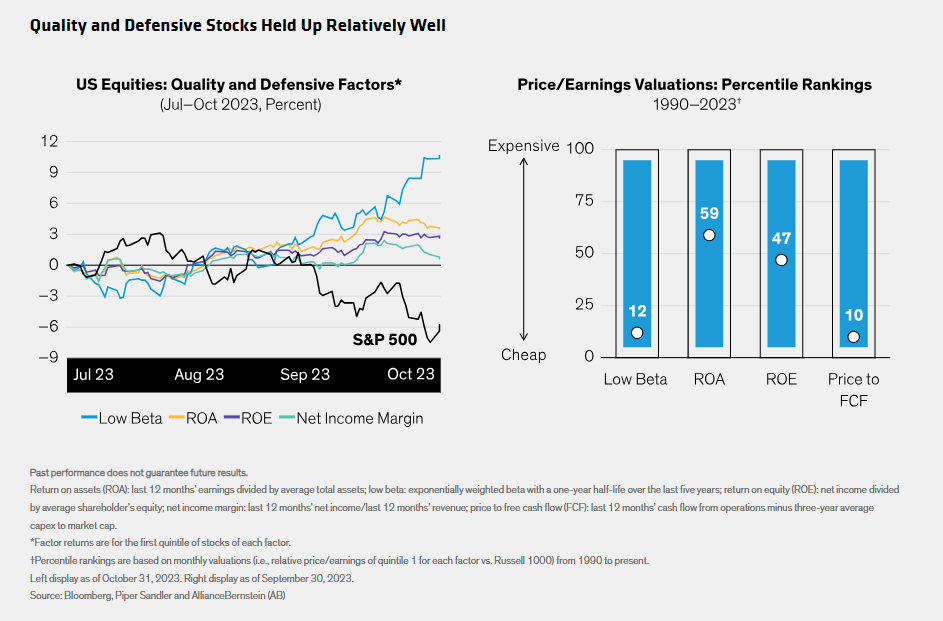
Weakness in US equity markets since July reflects ongoing uncertainty about the macroeconomic outlook. Despite the concerns, stocks with quality and defensive features have performed relatively well and could help portfolios surmount shaky conditions ahead.
After a strong seven-month run, US stocks faltered in recent months. From July 1 through the end of October, the S&P 500 fell by 5.8%. Stocks were still up by 10.7% since the start of the year through October, and have bounced back from recent declines in early November. But investors are concerned that economic growth may be hurt by persistently high interest rates, particularly as elevated energy costs make it harder to beat down inflation.
Still, during recent market declines, not all stocks have behaved the same. The top quintile of quality stocks based on profitability measures such as return on assets (ROA) and return on equity (ROE) have advanced by 3.5% and 2.6%, respectively, since July. Low-beta stocks, which tend to have less volatility than the broad market, rose by 10.6% during the same period.
Valuations Are Looking More Attractive
Equity valuations have declined from relatively expensive levels seen at mid-year. The S&P 500’s price/forward earnings (P/FE) ratio, based on estimated earnings for the next 12 months, fell to 18.1× at the end of September, in line with its 10-year average.
Valuations of defensive and quality stocks look attractive from a historical perspective, in our view. At the end of September, the P/FE of low-beta stocks versus the Russell 1000 Index ranked in the first quintile, at the 12th percentile of all monthly observations since 1990. High ROA and ROE stocks were fairly valued at the 59th and 47th percentiles, respectively. In our view, that means investors don’t have to overpay for quality stocks with consistent profit generation and fundamental resilience—attractive features in periods of economic and business uncertainty.
Securing Resilience for Uncertain Times
Quality and defensive stocks were out of favor in the first half of 2023, when investor hopes for potential Fed rate cuts later in the year and enthusiasm for artificial intelligence fueled exceptional gains for many lower-quality companies and a small group of mega-cap technology stocks, respectively. In our view, recent performance patterns suggest that equity returns are poised to broaden. And stocks with quality and defensive features can help provide resilience to equity portfolios if economic conditions deteriorate and market sentiment sours further.
Beware of buying exposure to equity factors through passive portfolios, which often are backward-looking. We believe active stockpicking based on deep research is the best way to find select quality and defensive stocks. In a world of evolving risks, a disciplined focus on business models and company fundamentals can empower an equity portfolio to capture elusive sources of long-term return potential.
Related: Municipal Impact Investing: The First Step Is Identifying the Need


